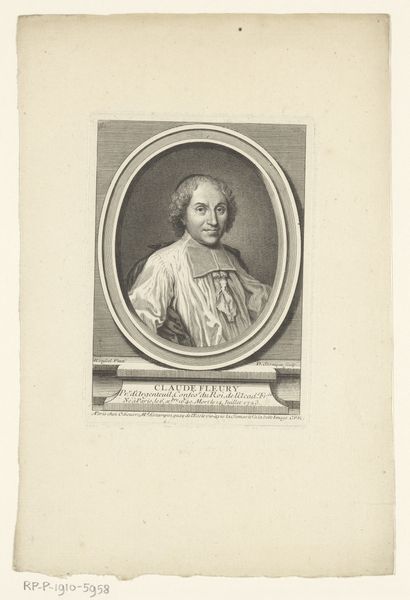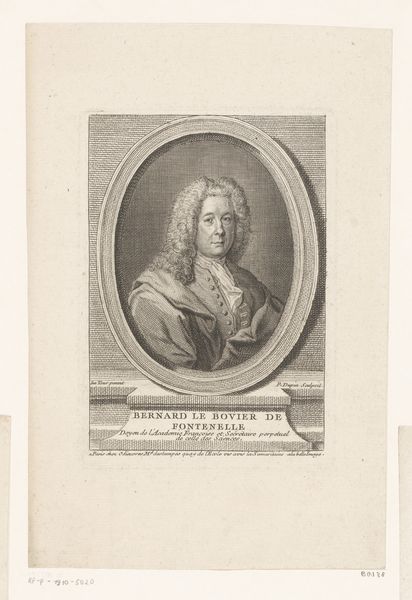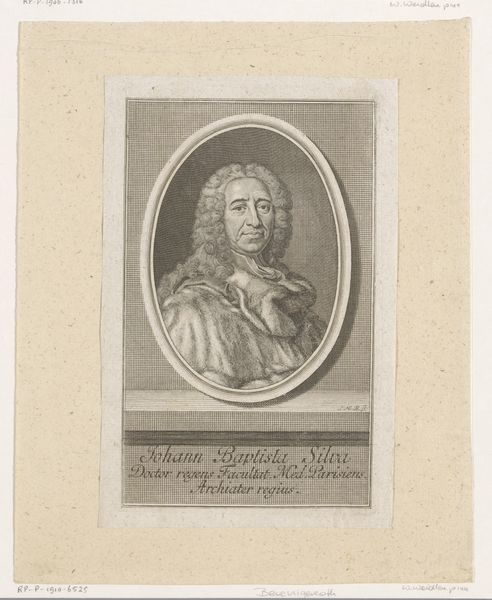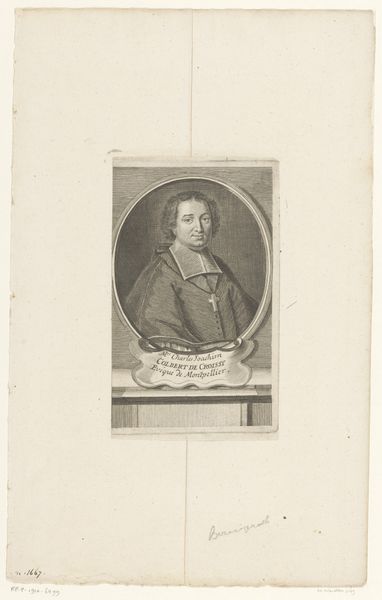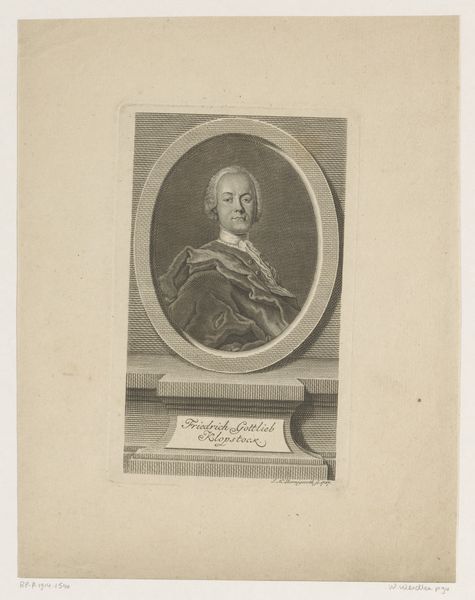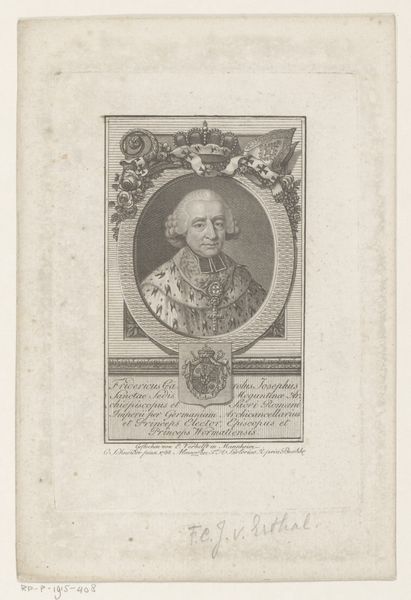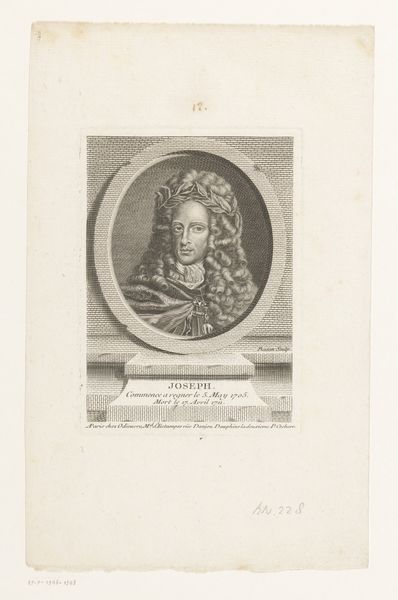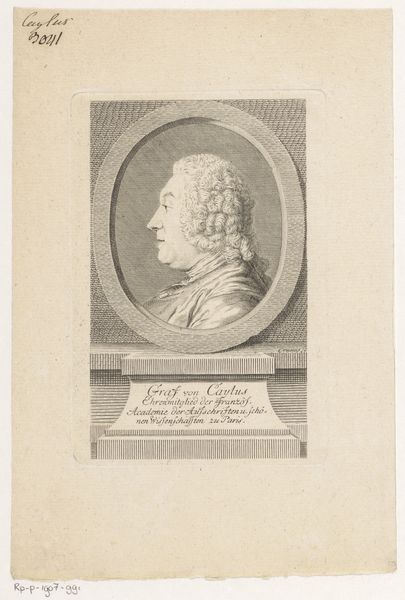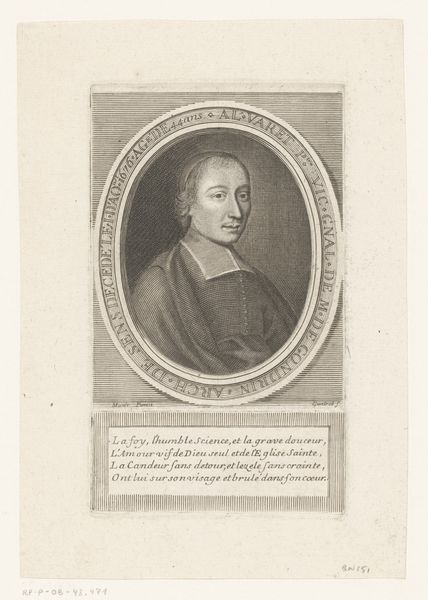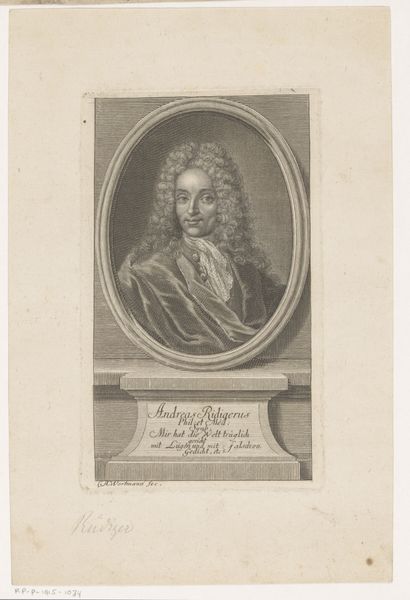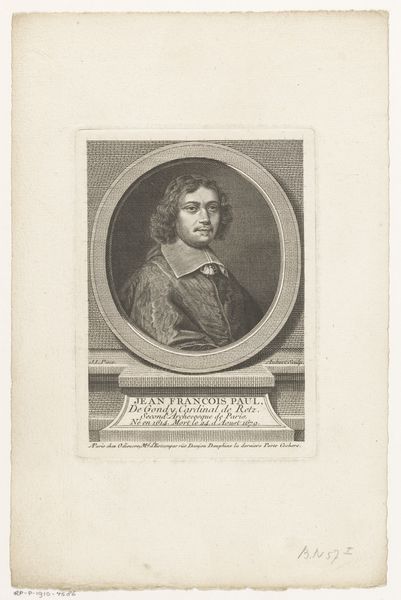
print, engraving
#
portrait
#
baroque
# print
#
old engraving style
#
academic-art
#
engraving
Dimensions: height 152 mm, width 111 mm
Copyright: Rijks Museum: Open Domain
Editor: So, this is "Portret van Charles-Joachim Colbert de Croissy," an engraving made sometime between 1726 and 1756 by Jean-Joseph Balechou. It strikes me as a fairly straightforward, almost stiff, depiction of a man in official garb. What do you see in this piece? Curator: Immediately, I’m drawn to the engraving process itself. Consider the labor involved: the meticulous carving into the metal plate, the repeated inking and pressing. This wasn’t simply about capturing a likeness; it was about mass production of an image, and who would be buying it. Think about the consumption patterns. Who would have access to prints like these and how would their social standing change or become amplified when put on display? Editor: That's a fascinating point. I hadn't considered the reproducibility aspect so much. So, you're less focused on Colbert himself and more on the socioeconomic implications of the print? Curator: Precisely. Colbert is just a symbol here, like a signature on currency. He embodies power, and his image becomes a commodity through this engraving process. Who controlled that process? Who benefited from it? It brings the tools of making very front and center, don't you agree? Editor: Absolutely. The printmaking trade itself becomes part of the story. How do the materials of paper and ink, then, speak to the broader context? Curator: The paper and ink themselves were commodities, often sourced from specific regions, creating interconnected economic networks. Each line etched embodies time, labor, and the complex socio-economic conditions of 18th-century France. This pushes the boundaries of seeing "high art" in conventional notions of oil on canvas versus "mere prints," doesn't it? Editor: It really does change the way I see the work. I was focused on the individual portrayed, but now I see how the means of production and distribution are actually the core of its meaning. Curator: Exactly. It’s about demystifying art and understanding its connection to labor, material reality, and broader patterns of consumption in that period.
Comments
No comments
Be the first to comment and join the conversation on the ultimate creative platform.
